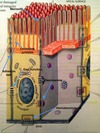A&P final exam Flashcards
1
Q

A

2
Q

A

3
Q

A

4
Q

A

5
Q

A

6
Q

A

7
Q

A

8
Q

A

9
Q

A

10
Q

A

11
Q

A

12
Q

A

13
Q

A

14
Q

A

15
Q

A
Articular cartilage

16
Q

A

17
Q

A

18
Q

A

19
Q

A

20
Q

A

21
Q

A

22
Q

A

23
Q

A

24
Q

A

25
Q

A
Atonomic nuclei in brain stem.

26
Q

A
Autonomic ganglia

27
Q

A
Autonomic neucli in spinal cord.

28
Q

A
Ganglionic neurons.

29
Q

A
Preganglionic neuron

30
Q

A





























































